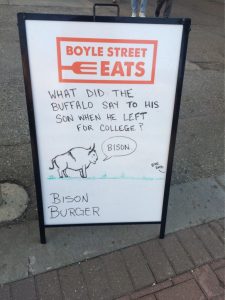Beef producers and Ducks Unlimited Canada find common ground to improve sustainability
Kristine Tapley has an unusual job title for an employee of Ducks Unlimited Canada, an organization traditionally known as a fowl-hunting lobby. Based in Manitoba, she’s the Regional Agrologist, Beef Industry. The only one for the Prairie region. Her job is to support the beef sector through partnerships, by promoting research and innovative ideas to producers, and by adapting DUC’s programs to ensure better uptake.
“Our starting point is that producers own much of the remaining habitat on the Prairies. As long as they have viable operations, it will stay in grass and water to meet their needs,” she explains. “We are interested in keeping those producers going so that the Prairies support a thriving beef industry, lots of habitat for waterfowl and the ecological services it provides.”
That’s where things get sticky. Long-term average margins show that a herd of 200 head provides an annual income of $17,559. So, not sustainable. And in many cases, there’s no way to make a living on the farm other than by working off the farm. Among the biggest barriers—access to land. Kristine has first-hand experience of this. Her father and brother’s farm is landlocked. She and her husband had to move away to start their own beef operation.
Okay, so still not seeing the tangible link to ducks….
Here’s the clever part. DUC actually has a vested interest in the sustainability of the beef industry. It recognizes that forage and grasslands that stay in the hands of producers benefit both cattle and wildlife—and are critical to health of grasslands and wetlands. A report from the Canadian Roundtable for Sustainable Beef shows that the beef sector only accounts for 33 percent of land in agricultural production but provides 68 percent of the wildlife habitat. Other data on the benefits of cattle for biodiversity will be available in a few years. DUC also realizes it can have a greater impact on sustainability by supporting the beef industry than by buying land and conserving it one acre at a time. The broader perspective. There’s only one landscape. Everybody has to live on it—preferably, in harmony.
As such, DUC runs a number of resources and programs to help restore and protect Canada’s land and water, which can become an integral part of a producer’s long-term management plan. Traditionally, the best-known have been easements; legal agreements through which the landowner retains ownership and gets paid for the natural assets on the property but that limit the type and amount of development on the land. However, DUC’s Revolving Land Conservation Program adds a very interesting angle because it recognizes market forces. The organization buys property that is significant for conservation, restores the wetland, slaps a permanent conservation easement on it—then puts it back on the market at a 10-30% discount. Why? The easement deters developers, cottagers, annual croppers etc., leaving beef producers as pretty-much the only purchasers, who are then able to expand their operations. Now, isn’t that clever?
“Today, DUC’s mission is to conserve, restore and manage wetlands and associated habitats for North America’s waterfowl,” says Kristine. “When we poll our community, the biggest issue they identify is water quality. Cattle need both grass and water. If you manage both of those well, there’ no reason they can’t work together.”
~ ~ ~ ~ ~ ~ ~ ~ ~ ~ ~ ~ ~ ~
As an aside, while Kristine was doing her Master’s, she went through the Canadian Cattlemen’s Association’s Young Leaders Program, which provides the industry-specific training and interest-specific mentorship that will help keep the beef industry profitable into the future. Kristine wanted to focus on sustainability. She was paired with mentor Jeffrey Fitzpatrick-Stilwell from McDonald’s.
“In 2014, McDonald’s announced it wanted to source sustainable beef—but it didn’t know what that meant yet,” she remembers. “It was a wonderful experience that formed the basis for my job today. I never thought I’d find a beef role in conservation so I’m pretty excited to be doing this.”


















